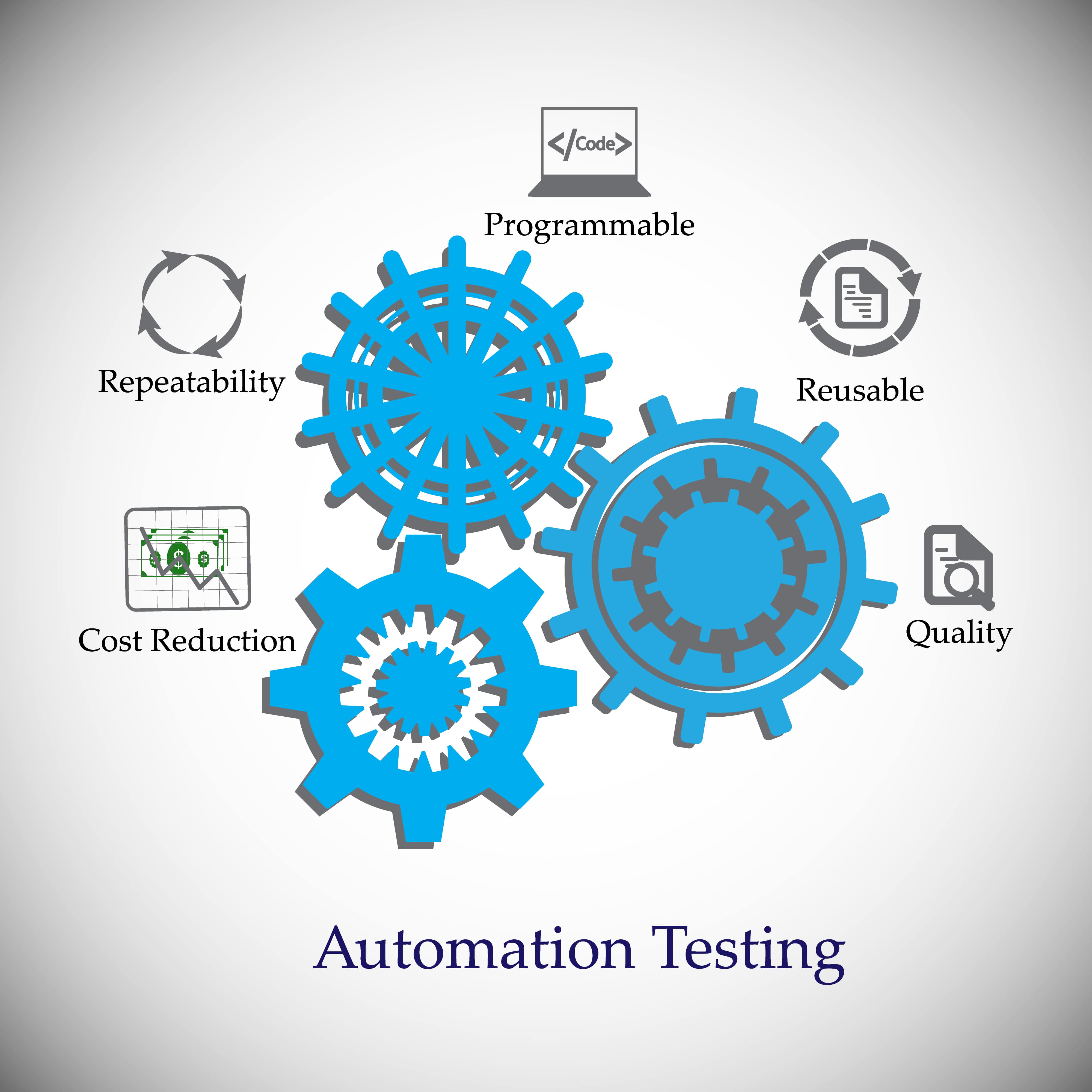Automation Testing Methods: Finest Practices for Seamless Integration
Automation Testing Methods: Finest Practices for Seamless Integration
Blog Article
From Handbook to Automated Testing: A Comprehensive Overview to Transitioning Smoothly and Efficiently
In the realm of software application testing, the change from handbook to automated processes has actually ended up being an increasingly essential shift for companies looking for to improve efficiency and precision in their screening techniques. As innovation remains to advance, the demand for seamless and efficient automated testing methods has never been a lot more pressing. The trip from handbook to automated testing is not without its obstacles, however when approached tactically and with a clear strategy in mind, the advantages can be substantial - automation testing. In this comprehensive overview, we will certainly check out crucial steps and considerations necessary for an effective transition, from the first selection of tools to the integration of automation right into existing operations. Stay tuned to discover the insights that will certainly help lead the means for a smoother and a lot more effective testing process.
Benefits of Automated Examining
Automated screening offers various benefits, improving effectiveness and precision in software application development processes. Automated tests can be run all at once on numerous devices and operating systems, substantially speeding up the testing phase compared to hand-operated testing.
Additionally, automated screening makes certain a greater degree of precision in detecting issues. Consistency in screening is likewise improved, as automated examinations implement the very same steps precisely each time they are run.
Selecting the Right Devices

First of all, analyze your purposes and requirements. Comprehend the scope of your project, the technologies entailed, and the skill collection of your group. This analysis will certainly help you identify the functions and abilities you call for in your testing devices.
Secondly, consider the compatibility of the tools with your existing systems and procedures. Seamless combination with your current software program development lifecycle is necessary to guarantee a smooth transition to automation.
Additionally, evaluate the scalability and adaptability of the devices. As your screening requires advance, the devices should have the ability to adapt and fit modifications properly.
Last but not least, aspect in the assistance and community around the devices. Robust support and an active customer area can give valuable sources and support when applying automated testing. By carefully considering these facets, you can choose the right devices that align with your needs and established the stage for a successful change to automated screening.
Creating Effective Test Manuscripts

When crafting examination manuscripts, it is important to take into consideration the specific needs of the software being tested and make certain that the scripts resolve all important functionalities. Descriptive and clear calling conventions for examination manuscripts and examination situations can enhance readability and maintainability. In addition, integrating mistake handling devices within the examination manuscripts can aid in identifying and resolving concerns without delay.
Additionally, arranging examination scripts into modular components can improve reusability and scalability, lowering redundancy and enhancing performance in examination manuscript maintenance. Normal reviews and updates to check scripts are important to equal evolving software requirements and performances. By following these principles, testers can develop robust and reliable examination scripts that contribute dramatically to the success of automated testing processes.
Integrating Automation Into Workflows
Efficient integration of automation devices into existing process improves procedures and enhances efficiency within software growth cycles. When including Click Here automation right into operations, it is critical to recognize recurring tasks that can be automated to conserve time and minimize human mistake. By flawlessly incorporating automated screening devices like Selenium or Appium right into the software program advancement lifecycle, teams can accomplish faster feedback on code changes, leading to quicker insect discovery and resolution. This integration permits continuous testing throughout the advancement procedure, making certain that any concerns are recognized early on, resulting in greater software high quality. In addition, automation can be utilized to trigger tests automatically after each code devote, supplying prompt validation and liberating testers to these details concentrate on more complex scenarios. Appropriate combination of automation devices requires partnership in between advancement, screening, and operations teams to develop a unified process that enhances effectiveness and efficiency in providing top notch software.
Ensuring a Smooth Transition
Successfully transitioning to automated testing involves meticulous preparation and careful implementation to minimize disruptions and make best use of performance in the software application advancement procedure - automation testing. To ensure a smooth transition, it is crucial to start by performing a detailed assessment of the existing screening processes and determining areas where automation can bring the most significant advantages. Involving with all stakeholders early while doing so, including designers, testers, and task managers, is critical for garnering support and buy-in for the automation effort
Communication is essential throughout this change phase. Clear communication of the objectives, benefits, and expectations of automated testing assists to handle any type of resistance or issues that may occur. Additionally, providing appropriate training and sources for employee to upskill in automation devices and techniques is important for making sure a successful transition.

Verdict
To conclude, transitioning from guidebook to automated screening supplies numerous benefits, including raised performance and reliability. By picking the proper Continue tools, writing reliable test scripts, and incorporating automation perfectly into workflows, companies can ensure a smooth and successful shift. It is important to accept automation as a useful property in software application testing procedures to enhance total high quality and efficiency.
In the realm of software program testing, the shift from handbook to automated procedures has actually come to be an increasingly essential shift for organizations seeking to improve effectiveness and precision in their testing methods. Automated tests can be run concurrently on several devices and operating systems, dramatically speeding up the testing phase contrasted to hand-operated testing. Consistency in testing is additionally boosted, as automated tests carry out the very same steps exactly each time they are run.To make certain the effective execution of selected screening devices, the production of effective examination manuscripts plays a critical role in verifying the functionality and performance of automated procedures - automation testing. By following these concepts, testers can develop efficient and robust examination manuscripts that contribute significantly to the success of automated testing processes
Report this page